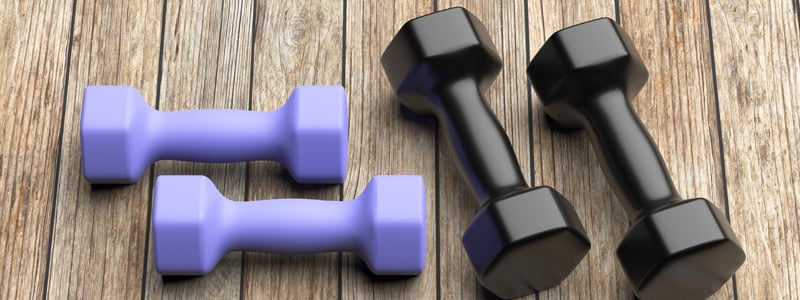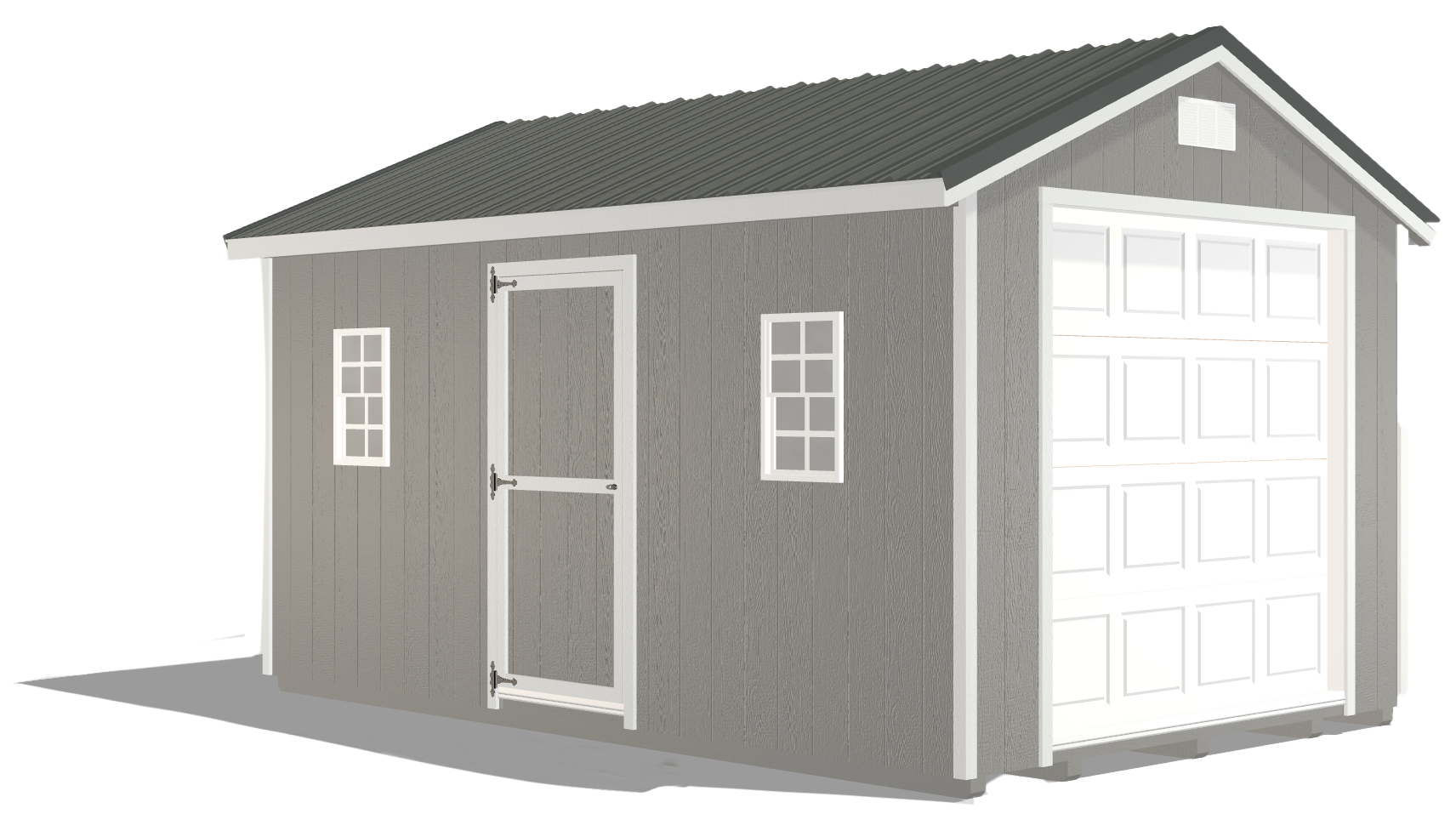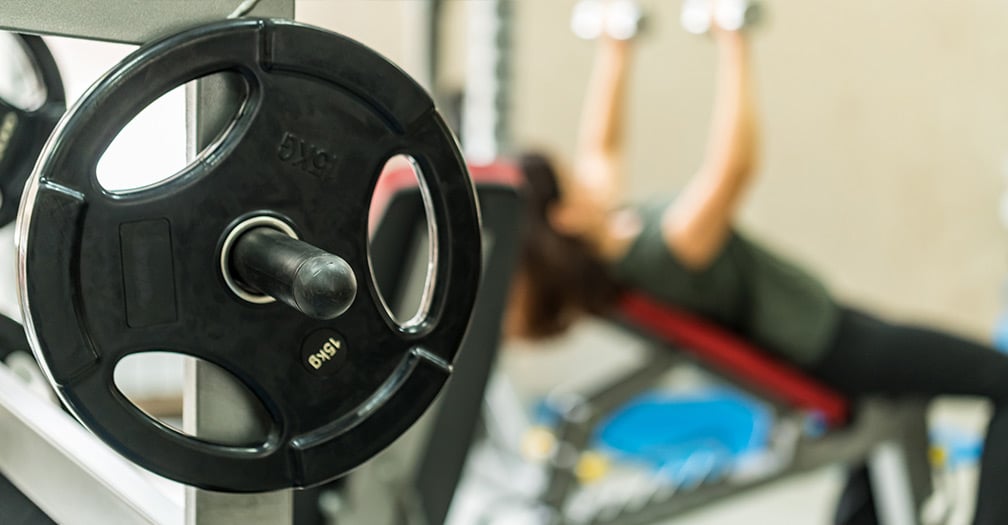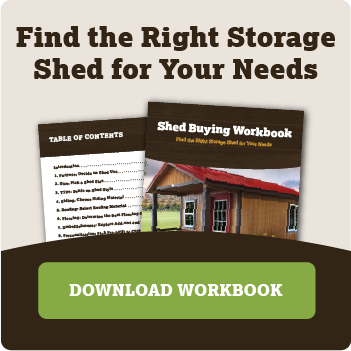Workout Gym 101: Tips for Setting Up a Backyard Shed Gym
by Dakota Storage Buildings, on May 06, 2020
Designing a custom workout space may be the best alternative to going to the local gym.
Only time will tell what lasting impacts the COVID-19 pandemic will have. How long will this last? Will people continue to work from home after the all-clear is given? Will social distancing be necessary again in the future?
While we can’t know the answer to these questions, we do know that investing in our health is always a good idea – perhaps now more than ever.
Studies show that exercise can help boost your immune system. Other benefits of working out include reducing stress and anxiety or simply getting a little mood-boost. Walking or biking outdoors are often recommended as easy, go-to activities (if the weather allows). Going to the gym can be another great way to get those workouts in, though it may not always be the most convenient option. Of course, when social distancing is in play, this may not be an option at all.
An affordable, all-weather, anytime solution is to set up a home workout gym. Not thrilled about the idea of having gym equipment infringe on your living space? Don’t worry – there’s a better way. If you’ve ever wished your workout gym was a little closer to home (but not actually in your home), it doesn’t get much better than having your own backyard gym shed.
Get out of the House – and Into a Gym Shed
There’s something about a change of scenery and having a dedicated place to go that motivates people to exercise more regularly. That’s one reason so many people invest in a workout gym membership. But what if you could have the best of both worlds? What if you could have the convenience of an easily accessible, always open, germ-free, private gym shed that also offers that motivating factor of getting out of the house and away from distractions?
A dedicated backyard gym shed is a win-win solution and doesn't have to cost much money. In fact, you can actually save money in the long-run by ditching monthly workout gym fees. Let’s look at the basics of setting up a shed gym.
The Perfect Space
If you find yourself spending a lot of time at home, whether due to waiting out a pandemic or because you regularly work from home, designating a dedicated space for a private, uninterrupted workout is ideal. While a corner in your basement may do the trick, a gym shed can provide a convenient getaway with greater flexibility and privacy.
If you don't already have a storage shed to convert into a home workout gym, there are a range of excellent shed options available. From simple utility sheds to standard and specialty sheds that easily blend into any residential neighborhood, you’ll find plenty of space and privacy to suit your gym shed budget. Because of a shed’s versatility and durability, you use this investment in many ways throughout its long lifespan – it may even boost your property value.
Equipment Needs
You can get started with inexpensive but adaptable workout essentials such as a dumbbell set, stability ball, and resistance bands for strength training. An exercise mat provides the optimal cushion for sit-ups, push-ups, yoga, and Pilates. For cardio, consider picking up a jump rope or aerobic steppers.
Your shed gym also offers plenty of room for treadmills, stationary bikes, and other equipment. You can customize your space with plenty of equipment options so you’ll never get bored. Add a stereo system for energizing music and a TV/monitor to workout with DVDs or stream the plethora of workouts now available via the internet.

Flooring Enhancements
The type of flooring you invest in for your gym shed will depend upon your needs, budget, and preferred style of workout. Protective interlocking floor mats are a popular choice. Other flooring options include carpet, wood, vinyl, cork, or even turf.
Insulation & Add-ons
For all-year-round use, you may need to consider ways to warm and cool your backyard gym shed. Adding spray foam insulation to the roof and walls creates a watertight membrane of protection against the heat and cold.
Other custom options for your shed gym include adding a loft, workbench, storage kit, porch, shutters, and contrasting trim.
Benefits of a Backyard Shed Gym
As you can see, building a workout gym can be an exciting endeavor that offers many benefits for many years to come.
- No monthly gym fees
- Affordable setup
- Maximizes your time investment by eliminating travel
- Convenient and always accessible
- No crowds or waiting to use equipment
- No need to worry about how you look
- Germ-free
- Dedicated workout space close to home
- Not weather-dependent
- Plenty of room to customize to your needs
- Space to add more equipment as desired
- A place to get away
- Uninterrupted, private workouts
- Opportunity for group or individual instruction through technology
It’s Time to Shed Some Stress
Now is the perfect time to build your backyard gym shed – and Dakota Storage Buildings is here to help. Our ranch-style building is a great starting point. You can have some fun with our online configurator, choosing options as you go to make it uniquely yours, or you can browse all of our backyard building options.
Click the link below to start creating the perfect getaway for stress relief in trying times and better health for a lifetime.
"I bought a 10x16 shed last summer. I use it exclusively as a "gym." It's got just the right amount of space to fit everything I need. The only thing I added was plywood on the floor to prevent damage to the existing floor. I have free weights, trap bar, kettlebells, inversion table, TRX, power rack, bench, jump rope, mace bell, bands, etc. I have a heater for the winter and a fan for the summer, but I rarely use them. And the skylight keeps it bright during the days. Anyway, I thought I would let you know it works great as a gym." - Tom H.



























